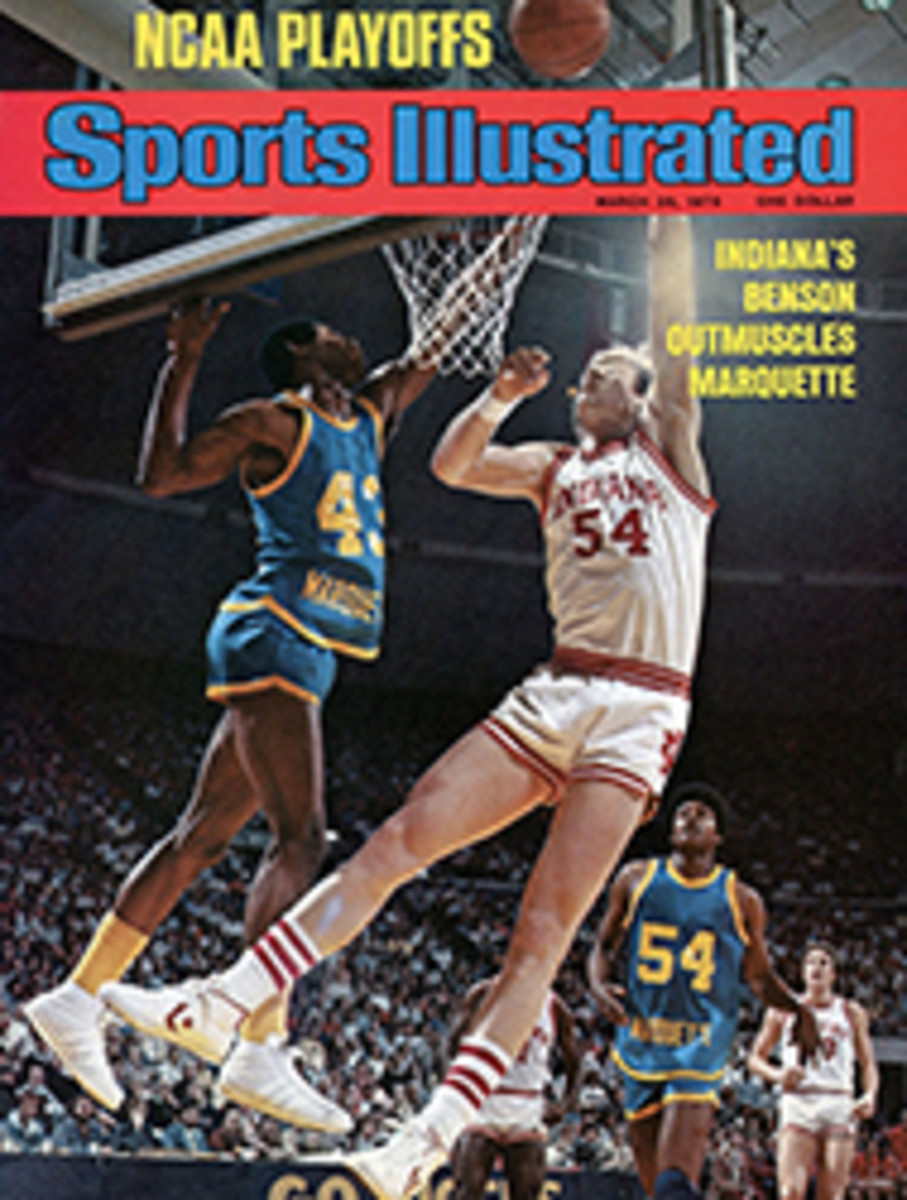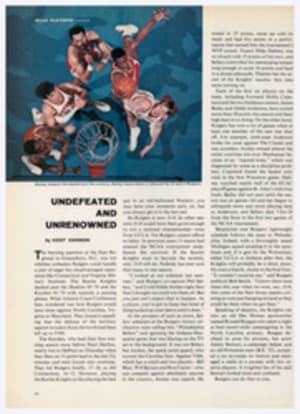
LETTER FROM THE PUBLISHER
Because SPORTS ILLUSTRATED publishes more color photographs of fast-breaking news events than any magazine in the world, we routinely make extensive use of complex lighting equipment that other publications seldom—if ever—employ. We use all this gear primarily to increase the amount of light available at indoor events, and a perfect example is this week's coverage of the NCAA basketball regionals, which begins on page 12.
While the intensity of the lighting in most modern arenas is adequate for the spectators in the stands and for television cameras, it is not good enough for a still photographer using relatively slow color film. To bring the lighting up to snuff at last week's four regional sites—Greensboro (N.C.) Coliseum, Freedom Hall in Louisville, Ky., Louisiana State University's Assembly Center and Pauley Pavilion at UCLA—several tons of strobe equipment were needed.
Unlike the earlier days of news photography, when hand-held flashguns flared in the subjects' eyes and left them momentarily blinded, SI's strobes are strategically placed on the catwalks far above the arena's floor. The reason for this distant location is not simply to leave the athletes' vision intact, however, but to sharply define the critical areas of action. "With our strobes, we can create the kind of dramatic lighting that a spotlight does on a theatrical stage," says Director of Photography Jerry Cooke.
Getting the pictures may be something of an artistic achievement, but getting all that equipment properly installed in the rafters requires a strong back and a thorough knowledge of electricity. For the Mideast Regional at LSU, Photo Assistant Anthony Donna supervised the installation of four light clusters 75 feet above the basketball court. Donna placed a cluster above each corner of the floor, meticulously aiming his strobes so that the illumination from two of the clusters would cross between the foul line and the backboard at each end of the court. Then he interconnected all the lights to ensure that when a camera was fired, all the strobes would flash at precisely the same millisecond.
Finally, a cord was dropped from the strobes to the photographers (in this case, Rich Clarkson and Heinz Kluetmeier) at each end of the court, who plugged them into their Hasselblad cameras. The photographers checked the strobes for synchronization and positioning by taking a series of Polaroid test pictures.
Each strobe can produce 4,000 watt-seconds of illumination, but because the pulse of light lasts only 1/500th of a second, it is virtually imperceptible to fans, players or TV viewers. Even that brief burst, however, is enough to freeze the image on our photographers' film.
Lighting a building is a complicated procedure, one that Donna confesses he misses not at all during other sports seasons. "We just use that one big strobe in the sky for outdoor games," he says. "The only time it's ever going to blow a fuse on me is during an eclipse."
PHOTO
DONNA SHEDS LIGHT ON THE SUBJECTS

